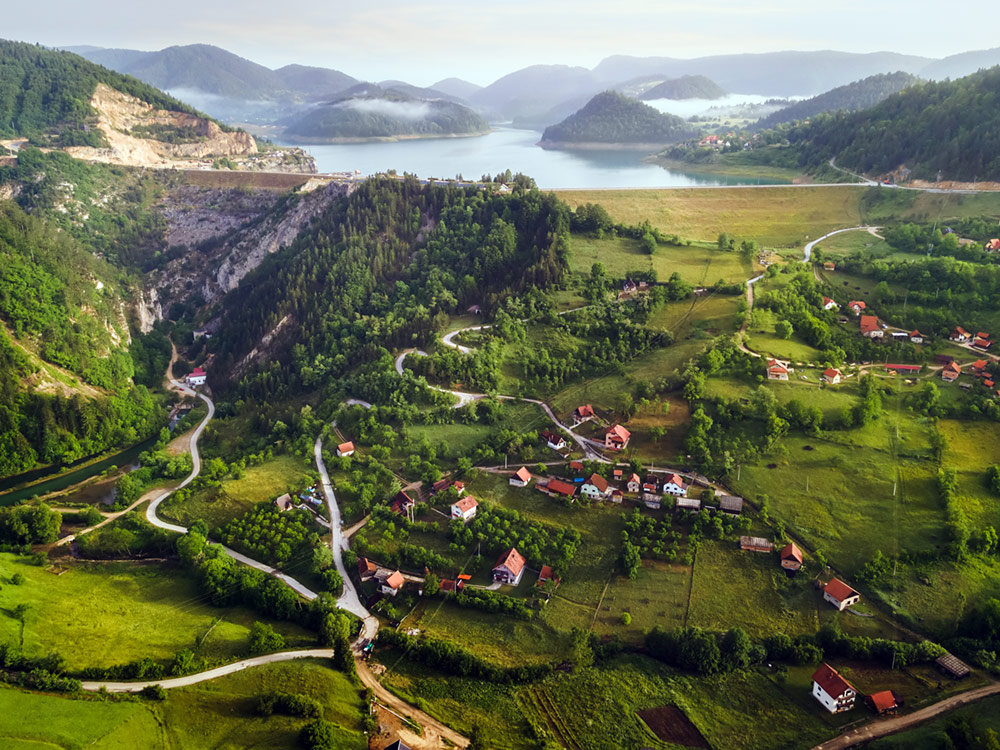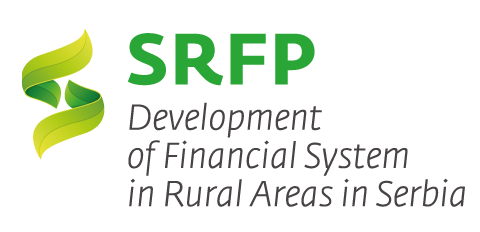A Background in Rural Tourism in Serbia and How to Get Started

Introduction
 Tourism in Serbia is an industry which has economically impacted quite substantially on rural areas of Serbia. Tourism on a village level covers a wide-variety of activities, not only a holiday in the country but includes other leisure. Rural tourism in Serbia is an emerging industry, which is meeting the demand of tourists, button the other hand is a fairly new source of income generation in rural areas, which is less engaging in typical agricultural activities while preserving old-traditions. Essentially, in many cases, this is not just about getting into the rural tourism game, but saving rural infrastructure against the encroachment of and the loss to city life.
Tourism in Serbia is an industry which has economically impacted quite substantially on rural areas of Serbia. Tourism on a village level covers a wide-variety of activities, not only a holiday in the country but includes other leisure. Rural tourism in Serbia is an emerging industry, which is meeting the demand of tourists, button the other hand is a fairly new source of income generation in rural areas, which is less engaging in typical agricultural activities while preserving old-traditions. Essentially, in many cases, this is not just about getting into the rural tourism game, but saving rural infrastructure against the encroachment of and the loss to city life.
Rural tourism brings together almost 19 types of tourism: tourism on a farm, tourism on other farm dwellings; residential tourism; homeland tourism; sport and recreational tourism; adventure tourism; health tourism; educational tourism; transit tourism; camping tourism; nautical tourism; continental tourism; cultural tourism; religious tourism; hunting tourism; fishing tourism; wine-tasting tourism; gastronomic tourism; and eco-tourism. Rural tourism in Serbia is in a good position internationally due to the development of this sector over the past fifteen years. In Europe alone, rural tourism has grown by 52% and in the past thirty years, Europe has become the leader in this industry. Serbia is well-positioned in the rural industry field due to its traditional villages, forests and mountainous regions. In almost all regions of Serbia, rural tourism is included in its economic development plans.
1. Rural tourism in Serbia
 On the territory of Serbia, 90% of the region is considered rural with about 43% of the total population residing in these areas. Rural tourism has gained strength in the past fifteen years, although its roots stretch back to the 1970s. Serbia is enriched with various classes of natural attractions, but not by the offer of touristic infrastructure. At that time, the government of Serbia owned almost all hotels and rural-based tourist businesses. The emphasis on nature and rural areas as an attraction for tourism was taken into consideration. With conflict in the Western Balkan region during the 1990s, tourism, let alone rural tourism, dropped to minimal levels.
On the territory of Serbia, 90% of the region is considered rural with about 43% of the total population residing in these areas. Rural tourism has gained strength in the past fifteen years, although its roots stretch back to the 1970s. Serbia is enriched with various classes of natural attractions, but not by the offer of touristic infrastructure. At that time, the government of Serbia owned almost all hotels and rural-based tourist businesses. The emphasis on nature and rural areas as an attraction for tourism was taken into consideration. With conflict in the Western Balkan region during the 1990s, tourism, let alone rural tourism, dropped to minimal levels.
Serbia is a land-locked country, whose main tourism offers are banjas (spas), health resorts and ski centres. As an alternative, rural tourism offers the option to stay in a farmhouse, in which the tourist can take part in farm life surrounded by historical Serbian tradition.
In Serbia, there are three types of rural tourism infrastructure:
- Regular village houses – without an ethnic look or description rented to tourists;
- Ethno-house – where the house, attached buildings and equipment connected to it are built in the traditional type of folk architecture;
- Ethno-settlements – continuously inhabited buildings reflecting traditional style methods of construction in a settlement.
1.1 Regular village houses
 Basic rural tourism can take the form within a family house in a village that is dedicated to attracting tourists as means of raising another source of income. Typical definition of village house tourism:
Basic rural tourism can take the form within a family house in a village that is dedicated to attracting tourists as means of raising another source of income. Typical definition of village house tourism:
- The house intended for tourists is located in a village
- A fully equipped bathroom
- The object’s owners speak a foreign language
- One room has a bed, with option for more beds and the room as a separate entrance
- The house is easily reached by road
- Full-time supply of electricity
This type of rural tourism is the most continuous and sustainable. The owners are usually not concentrated on just this one income, but rely on other income streams as well. This form of rural tourism provides a glimpse into village life, nature and introduces the Serbian style of home-life and local values. Over 1,000 households are registered of this designation in Serbia. Nowadays, households are offering swimming pools, hot-tubs, cable television and wireless internet. Activities for tourists: hiking, hunting, fishing, sports, making of fruit jams and preserving vegetables, which can be bought from the owners.
1.2 Ethno-houses
 Ethno-houses are with a more agricultural style of infrastructure, comprising barns, tool sheds, that are traditional and with a folk appearance, not only Serbian, but can represent other ethnic groups as well. More linked to agricultural activities, old customs and traditions. There are several features of ethno-houses. In this example, an ethno-house can take the form representing the ethnicity of Serbian, Slovak, Bulgarian, Hungarian, or other, homes, using their traditional building materials, e.g. cane, wood, brick, stone, etc. These ethno-houses may be located in natural reservations, next to fish ponds, reed processing workshop, part of a museum, livestock farm, horse farm, etc.
Ethno-houses are with a more agricultural style of infrastructure, comprising barns, tool sheds, that are traditional and with a folk appearance, not only Serbian, but can represent other ethnic groups as well. More linked to agricultural activities, old customs and traditions. There are several features of ethno-houses. In this example, an ethno-house can take the form representing the ethnicity of Serbian, Slovak, Bulgarian, Hungarian, or other, homes, using their traditional building materials, e.g. cane, wood, brick, stone, etc. These ethno-houses may be located in natural reservations, next to fish ponds, reed processing workshop, part of a museum, livestock farm, horse farm, etc.
In Vojvodina, in the municipality of Zitiste, there is an ethno-house that represents the Romanian culture, with a Romanian Orthodox church, homes, smoke-houses, barns and old-style agricultural machines located nearby. In this village, Torak, is the beginning of a Romanian culture complex. Various tourist agencies are including this complex into their offers and is an attraction for school trips.
In the village of Kovacica, there is an ethno-house which represents the folk architecture of the Slovak people in Vojvodina. Kovacica is home to naïve paintings which are part of the largest galleries in the world and in the collections of Spanish King Juan Carlos and the Norwegian Prince Harald.
The salas type of farms is located in the Vojvodina municipalities of Kanjiza, Subotica, Novi Sad, Sombor Becej and Srbobran. The salas is a traditional style of houses and farms linked to the Serbian, Croatian, Bunjevac and Hungarian ethnicities of the region. Built in the 19th century, they are manor-like, where the fields, pastures and orchards surround the farmyard. The buildings were constructed out of mud and organic materials, covered with a layer of clay.
1.3 Ethno-settlements
 Outside regular village houses and ethno-houses, rural tourism covers a wider variety of activities provided by the local and rural population. Ethno-settlements around Serbia present traditional manners of constructing houses. These ethno-settlements are all over Serbia: Sirogojno is the only open air museum in Serbia. The museum demonstrates the construction, interior decoration, the work and the daily life of families that lived in mountainous regions of Zlatibor. Sirogojno is famous for knitting heavy woollen socks and clothing. The Sirogojno region today is a famous tourist destination and home to a number of ethno-settlements.
Outside regular village houses and ethno-houses, rural tourism covers a wider variety of activities provided by the local and rural population. Ethno-settlements around Serbia present traditional manners of constructing houses. These ethno-settlements are all over Serbia: Sirogojno is the only open air museum in Serbia. The museum demonstrates the construction, interior decoration, the work and the daily life of families that lived in mountainous regions of Zlatibor. Sirogojno is famous for knitting heavy woollen socks and clothing. The Sirogojno region today is a famous tourist destination and home to a number of ethno-settlements.
In Mokra Gora is located the ethno-settlement called Drvengrad which in on the narrow-gauge railroad connecting three mountains: Tara, Zlatibor and Sargan. Drvengrad itself is a village built only of wood which is intended to protect the folk architecture of the region.
The village of Kostunici has been constructed an industrial complex for heathy foods and a tourist complex consisting of ethno-house “Andjelija Milic” and the museum “Prodanovica magaza”, and the hotel “Milica and Panajota”. Tourist accommodation is provided in farmer’s houses and in ‘vajat’ houses, a small wooden house with each looking like an apartment.
1.4 Natural and theme settings in Serbia
 Clusters of rural tourism exist in Serbia in the following regions: Gornje, Podunavlje, Fruska Gora, Banat, Podrinje-Valjevo mountains, Tara-Zlatibor-Zlatar mountains, Stara Planina-Kucaj mountains, Vlasina and Krajliste mountains.
Clusters of rural tourism exist in Serbia in the following regions: Gornje, Podunavlje, Fruska Gora, Banat, Podrinje-Valjevo mountains, Tara-Zlatibor-Zlatar mountains, Stara Planina-Kucaj mountains, Vlasina and Krajliste mountains.
Rural tourism can encompass a number of forms of tourist activities:
- Gastronomic tourism
- Nature tourism
- Agri-tourism, village house and farms
- Cultural tourism
- Eco-tourism
- Events tourism
- Other forms of tourism and combined, special interest tourism
Main Considerations to Setting-up a Rural Tourism Enterprise
Step 1 – Assessing personal resources
 Are you offering potential visitors an experience they cannot get somewhere else? Is the farm and surrounding rural area full of nature and attractions interesting for alternative enterprises and agri-tourism? To get started with establishing a rural tourism enterprise, you will need to inventory personal and local resources (natural and social) that will attract tourists. This will lead you to the next step, preparing a business and marketing plan.
Are you offering potential visitors an experience they cannot get somewhere else? Is the farm and surrounding rural area full of nature and attractions interesting for alternative enterprises and agri-tourism? To get started with establishing a rural tourism enterprise, you will need to inventory personal and local resources (natural and social) that will attract tourists. This will lead you to the next step, preparing a business and marketing plan.
Step 2 – Considering natural and social resources of the wider area
 The first question you need to ask is, “Why would anyone want to come here?” or “What is the attraction, or mix of attractions, that would bring tourists to my area or village?” What works in a neighboring village may not apply to yours, you need to keep this in mind. To start with, you need to develop a recognizable and competitive product that meets the needs and expectation of tourists. After reviewing your prospective attractions, you need to make them attractive and inviting to tourists.
The first question you need to ask is, “Why would anyone want to come here?” or “What is the attraction, or mix of attractions, that would bring tourists to my area or village?” What works in a neighboring village may not apply to yours, you need to keep this in mind. To start with, you need to develop a recognizable and competitive product that meets the needs and expectation of tourists. After reviewing your prospective attractions, you need to make them attractive and inviting to tourists.
To get started, you need to make an assessment of your resources:
a) Natural resources as the base attraction for tourism and agri-tourism. The inventorying of natural resources which can support tourism includes:
Landscape features. What does the natural surrounding countryside offer of interest for tourists?
Wetlands, untouched nature and wildlife habitat. Can be used for lessons for the environment, wildlife and bird watching.
b) Culture as the basis of alternative tourism. Cultural or heritage tourism is a form of tourism which holds great potential in rural areas all over Europe. This can be defined as tourism directed toward experiencing the arts, heritage and unique character of a rural area counting as traditional settlements, or cultural such as musical or local food preparation.
c) Social resources. Community characteristics and infrastructure. The local community plays a large role in the development of a rural tourism business. What does the local community offer to assist your business? What is intrinsic to the community that will assist with your enterprise?
Step 3 – Deciding about your entrepreneurial capacity
 To evaluate your entrepreneurial capacity to take on this significant activity, there are a few things you need to ask yourself:
To evaluate your entrepreneurial capacity to take on this significant activity, there are a few things you need to ask yourself:
a) What is my motivation? Finding a new form of income? Retirement options? A new lifestyle? Education regarding farming or rural issues? Preserving local culture/history? Additional to these questions, one must ask motivation:
- Am I willing to go the distance to get gain the knowledge to start this business?
- Do I enjoy meeting people, socializing with them and providing services to strangers?
- Is my family supportive and can make the necessary changes in their lives?
- Do I like this type of work well enough to do it day after day?
b) Analysis of strengths, opportunities, challenges and problems. At this point, the owner needs to carry out a SWOT analysis as a manner to understand their fit into this business, but also to ascertain whether they did not raise issues that may sink the entire enterprise. This may be the time to compare your rural tourism idea compared to someone else.
Step 4 – Defining the enterprise role
 What are the different types of tourism services that can be offered? A wide variety of rural/agri-tourism can be offered by your start-up enterprise.
What are the different types of tourism services that can be offered? A wide variety of rural/agri-tourism can be offered by your start-up enterprise.
- Rural and agri-tourism accommodation services.
- Rural and agri-catering businesses (gastronomy).
- Proper agri-tourism – meaning taking part in the whole farming and agricultural experience with the owners of the enterprise.
- Historical agri-tourism farm – which use old techniques and old machines which takes the visitor back to old times.
- Rural/agri-sport and active tourism – rafting, kayaking, boat tours, horseback riding, skiing, hiking, etc.
- Rural/agri-therapy (health related products and services) – consumption of health/organic products, mental health by engaging in agricultural activities, rehabilitation, therapeutic or educational programs.
- Rural/agri-recreation and agri-entertainment – combine hotel and gastronomic services of rural tourism to activities that aim to tourist’s entertainment.
Step 5 – Business planning
 The business plan is necessary to define the business structure and to develop the steps to realizing your rural tourism venture. It does not need to be lengthy with massive details written by a business consultant, but can be brief describing the purpose, target market, resources and assets, marketing and operating plans, showing how to bring it all together. The business plan defines the product/services will be, will organize one’s thoughts, can be used to obtain financing identify risks the enterprise might face, explain the business concept and should serve as a working plan to make operational decision.
The business plan is necessary to define the business structure and to develop the steps to realizing your rural tourism venture. It does not need to be lengthy with massive details written by a business consultant, but can be brief describing the purpose, target market, resources and assets, marketing and operating plans, showing how to bring it all together. The business plan defines the product/services will be, will organize one’s thoughts, can be used to obtain financing identify risks the enterprise might face, explain the business concept and should serve as a working plan to make operational decision.
Step 6 – Determining infrastructure, equipment and other support needs
 For many rural tourism businesses, ensuring the required facilities for accommodation, food and other services offered and purchasing the necessary equipment is the largest initial expense. Conserving cash is the key to surviving the early years in business.
For many rural tourism businesses, ensuring the required facilities for accommodation, food and other services offered and purchasing the necessary equipment is the largest initial expense. Conserving cash is the key to surviving the early years in business.
Making a Capital Goods Assessment. One could start by compiling a list of all capital goods they might need to run the business and confirm against what they already have. It can be difficult to decide what to buy due to a lack of money, one must keep in mind not to buy just because they want it, and they need to buy since it is absolutely necessary to run the rural tourism.
Step 7 – Financing
 It is true that it is hard to get a loan to start a business unless one has a proven track record in business. Bankers want to see a history of success in that kind of operation before they are willing to take a chance. To get started, one can do this to find financing:
It is true that it is hard to get a loan to start a business unless one has a proven track record in business. Bankers want to see a history of success in that kind of operation before they are willing to take a chance. To get started, one can do this to find financing:
- Go to a commercial bank or financing company and offer property as collateral.
- Find equipment through leasing schemes.
- Check all national, EU and other donor programs which support tourism start-up schemes.
- Self-financing using savings or other personal investment mechanisms.
- Borrow from friends and relatives.
- Make all purchases on credit and conserve cash for emergencies.
All these options have advantages and disadvantages, and a start-up business may find that none of them works.
Step 8 – Business improvement tools
 What will you need to do to or need to know personally to get into agri-tourism?
What will you need to do to or need to know personally to get into agri-tourism?
a) Institutional assistance – this includes government, industry or community-based initiatives that provide strategic direction and support to agri-tourism beyond the individual business scale.
b) Tourism networks, clusters and linkages – tourism businesses can rely on clusters that provide an integrated product and diverse range of experiences that can meet visitor expectations and increases the view of their place. Clustering through a network includes services and activities of different agri-tourism and rural tourism enterprises and an authentic regional tourism experience.
c) Training and development – as a service industry, the owners must have knowledge of type of product they are offering to tourists. They should have this knowledge, or take courses, to have this knowledge on-hand when dealing with customers.
d) Skills, personal traits and experience – traits required to run an agri-tourism venture list as: communication skills, judgement and decision-making, situational awareness, behaviour management, vision, patience and business management skills.
e) Interpretation – is not about language skills, but bringing to life the story and the environment the tourist is staying in.
f) Certification systems – by attaining certification on various levels, operators believe that potential customers select them in part because they are management or eco-qualified.
Step 9 – Marketing the business
 For many tourist operators, the most difficult part is attracting enough customers to make the business profitable. In order to bring in the tourists, operators must take into account the following:
For many tourist operators, the most difficult part is attracting enough customers to make the business profitable. In order to bring in the tourists, operators must take into account the following:
a) What is marketing? Besides the business plan, each new business needs a marketing plan as a step to emphasize the procedures to reach future customers and sell its products or services. A marketing plan has several components:
- Situation analysis: first is to decide the nature and identity of the business and define its scope and then figure out to make it recognizable on the marketplace.
- Market research: a competitive analysis needs to be carried out and get access to specific segments of the agri-tourism market. Followed by this is the placement of your product to the right audience. Followed by pricing, meaning how much to charge for your product and services. Pricing is not a good way to compete on the market in the tourism business for two reasons, 1) the customer may perceive your offering as not good, and 2) other tourism operators may lower their prices leading to no one earning.
b) Developing a marketing plan – a good marketing plan outlines your target market and how to reach them. A marketing plan can be as simple as work-of-mouth referral or involve an intense promotion. The three basics of advertising include: the message, the medium and the target audience. In this case, originality is very important.
c) The medium – the marketing medium includes a wide-range of activities, from public relations and advertising to promotions and trade shows. This includes Promotion, encompassing every way of getting the name and product of the business to the potential customer. This can cover publicity or public relations by creating a positive image of the enterprise on the market, using search engines, mass media, tour operators, promotional paraphernalia or brochures.
d) The target audience – are a distinct groups or segment of clients that one expect to reach when employing different marketing strategies. Points to take into consideration: income level, age, location and client preferences.
e) Marketing costs – the cost of marketing for an enterprise will largely depend on the size and type of the operation, the medium selected, and the number of times any advertisements are repeated. With time, costs will be reduced.
f) Putting it all together – by putting together all the previous tools together, the goal of the marketing can be achieved: to know the customer so well that the product fits him and sells itself.
g) Situation analysis – of this entire process supports the marketing plan, in the end making the agri-tourism business successful.
h) Post-season evaluation and follow-up – assessing the effectiveness of the marketing plan and following up with past clients for future reservations.
Step 10 – Sales
 After initiating the business operation and marketing efforts result in people coming and staying at your tourist object, it is important to treat sales as carefully as all the other points. Before dealing with a client, a statement of “Terms and Conditions” should be provided, outlining what is to be provided and other details. A liability release is a legal document which, by signing, clients declare that if they get hurt, they will, not hold the operator liable.
After initiating the business operation and marketing efforts result in people coming and staying at your tourist object, it is important to treat sales as carefully as all the other points. Before dealing with a client, a statement of “Terms and Conditions” should be provided, outlining what is to be provided and other details. A liability release is a legal document which, by signing, clients declare that if they get hurt, they will, not hold the operator liable.
Payment may be done by cash, check, money order or credit card. For all these payment services, the operator needs to have these financial transaction functions in place.
Step 11 – Operations and safety
 Safety of your guests is very important and especially in rural tourism and agri-tourism. Bad news travels quickly and injury or fatality could not only ruin your image, but could influence the entire industry in the region. Operators should act on three elements of safety:
Safety of your guests is very important and especially in rural tourism and agri-tourism. Bad news travels quickly and injury or fatality could not only ruin your image, but could influence the entire industry in the region. Operators should act on three elements of safety:
- Perception of safety,
- Actual safety – that is, prevention of injury and damage to property.
- Response to an emergency if, despite best efforts, an incident does occur.
Clients must feel that are safe. It is important that the accommodation or tour are presented in such a way that the clients immediately trust the operator and fee secure in the activity in which they participate.
Step 12 – Achieving customer satisfaction
 Components of visitor satisfaction:
Components of visitor satisfaction:
- Safety and the perception of safety: As previously explained clients have to be safe and have to feel safe. It’s up to the agri-tourism operator to constantly take steps to eliminate those fears.
- Food: Many have developed strong preferences and simply cannot enjoy the experience unless they get the food they like. At the very least, the food has to be of very good quality, fresh, good ingredients and properly prepared.
- This translates into providing quality accommodation and personal service.
- Outstanding experience. Visitors want an experience different from all others. Remember, visitors want to experience and do, just not see.
- For those on vacation or planning a vacation, respond to call and emails immediately, adhere to set schedules and deal with problems as they arise.
- Maintain highest possible standards. In every part of the operation, ensure you are upholding standards counting as: food preparation, clothing and personal grooming, keep everything clean and tidy, maintain vehicles and equipment, personal conduct and speech, learn to be a good listener, no smoking, drinking, swearing or foul language.
- “Under-promise and over-deliver” – give your guests a better experience than they expected.
One final tip – be a tourist yourself. Go on trips, not just in your area, but to other parts of the country or world to see how other operators do it.
Sources used in this blog:
How to Establish a Rural Tourism Business, Greek National Tourism Organization, 2012
Rural Tourism in Serbia as a Concept of Development in Under-developed Regions, Marina Todorovic and Zeljko Bjeljac, 2008
